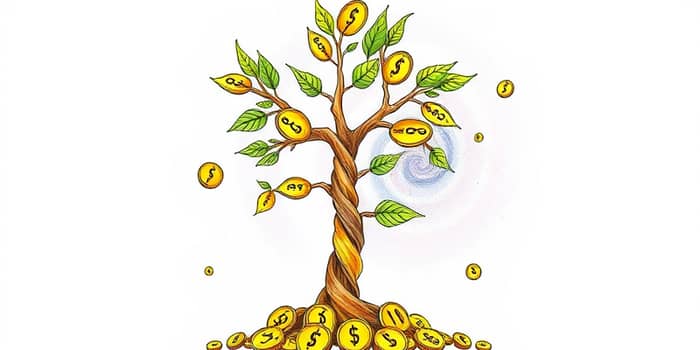At its essence, the eighth wonder of the world describes how money can multiply over time, creating wealth in ways that feel almost magical. Whether you’re a seasoned investor or just exploring your first savings account, understanding compound interest can radically transform your financial outlook. Embedded in age-old wisdom and modern finance, this principle rewards discipline, patience, and foresight.
Legend holds that Albert Einstein referred to compound interest as the greatest mathematical discovery of all time. Benjamin Franklin noted that money makes money, and the money that money makes makes money. These insights underscore how compound interest has shaped fortunes and fueled growth for generations.
Introduction: The Concept and Historical Significance
Compound interest is the process by which interest is calculated not only on the original sum you deposit (the principal) but also on the interest that has been added to that principal over previous periods. This contrasts sharply with simple interest, where earnings are computed solely on the initial principal, producing a linear increase over time.
Historically, the concept dates back to ancient civilizations where traders and moneylenders recognized the benefit of reinvesting earnings. In modern times, savers use compound interest to accelerate their net worth, while borrowers must guard against rapidly growing liabilities. By appreciating this dual nature, individuals can make informed choices to leverage compounding effectively.
What is Compound Interest?
At its core, compound interest can be described by the formula A = P(1 + r/n)^{nt}. Here:
- P is the initial principal or deposit.
- r represents the annual interest rate (in decimal form).
- n denotes how many times interest is compounded per year.
- t is the total time the money remains invested, in years.
In contrast, simple interest (SI) is calculated as SI = P × r × t. While simple interest grows in a straightforward, predictable manner, compound interest introduces the power of exponential growth by adding interest to the principal at each compounding interval.
The Mathematics of Compound Interest
Consider two illustrative examples that highlight how compounding parameters affect final returns:
Example 1: $5,000 at 4% interest, compounded monthly for 1.5 years (18 months). Under simple interest, you earn exactly $300. Under compound interest, you earn $308.65 because each monthly interest calculation applies to an ever-increasing balance.
Example 2: $10,000 invested at 5% annual rate, compounded quarterly over 10 years. Using A = P(1 + r/n)^{nt}, we compute A ≈ $10,000 × (1 + 0.05/4)^{4×10} ≈ $16,430. That yields $6,430 in interest versus $5,000 with simple interest—demonstrating how interest calculated on both initial principal and reinvested interest can boost returns.
The table above illustrates how even modest interest rates can produce significant extra earnings when compounding is at play. As compounding frequency or time increases, the gap widens dramatically.
Why Compound Interest Accelerates Growth
Compound interest thrives on repeated cycles of earning and reinvestment. Each compounding period adds interest to the principal, which in turn earns interest in the next period. More frequent cycles (daily, monthly, or quarterly) slightly increase the overall yield compared to annual compounding.
Over decades, these incremental gains snowball into far greater returns than you might expect. Savvy investors seize on this effect, often setting up automated reinvestment plans to ensure continuous growth. By embracing compounding frequency boosts returns, you can optimize every dollar you allocate toward long-term goals.
Psychological Impact: Patience vs Procrastination
Compound interest not only multiplies money—it also rewards a mindset of patience and consistency. Starting early, even with small contributions, allows the compounding process to unfold over time. Conversely, delaying or making irregular deposits diminishes the potential for growth dramatically.
Studies in behavioral economics reveal that humans often prefer immediate gratification over future rewards, a phenomenon known as temporal discounting. Recognizing this bias, you can structure your savings strategy to automate contributions, effectively bypassing the temptation to procrastinate.
Practical Applications and Real-World Implications
Compound interest applies to a range of financial products and scenarios:
- Savings accounts and certificates of deposit that reinvest earnings back into the account.
- Retirement plans such as IRAs and 401(k)s that grow tax-deferred over many years.
- Investment vehicles like dividend-reinvesting mutual funds and ETFs.
- Certain debts, notably credit cards, where compounding can increase what you owe if balances remain unpaid.
When evaluating deposit accounts, look at the Annual Percentage Yield (APY), which factors in compounding. For debt, scrutinize the Annual Percentage Rate (APR) and compounding terms to avoid unexpected interest accrual.
Key Tools, Tips, and Takeaways
To harness compound interest effectively, leverage these strategies and resources:
- Use online compound interest calculators to adjust inputs and visualize financial outcomes before committing.
- Apply the Rule of 72 as a quick mental math trick: divide 72 by your interest rate to estimate doubling time.
- Automate your investments. Early investing harnesses the most compounding power by ensuring consistent contributions.
- Compare compounding frequencies and fees across financial institutions to maximize your net gain.
By integrating these tools into your financial habits, you’ll make informed decisions, avoid common errors, and watch your savings accelerate.
Potential Pitfalls and Limitations
While compound interest can be a saver's ally, it can also work against you when it comes to debt. High-interest credit cards, payday loans, and certain private student loans often compound interest daily or monthly. If balances go unpaid, the debt load can grow exponentially, trapping borrowers in cycles of obligation.
To protect yourself, target high-interest balances for swift repayment, review the fine print on compounding schedules, and explore balance transfer or consolidation options. A clear understanding of how interest builds—and compounds—can keep you in control of your financial trajectory without unwelcome surprises.
Conclusion: Embrace the Wonder
Compound interest may sound like financial jargon, but in reality it’s a powerful tool rooted in simple mathematics. By embracing its principles—starting early, reinvesting earnings, and staying disciplined—you can turn modest savings into substantial wealth over time.
Whether you’re planning for retirement, saving for your child's education, or building an emergency fund, the extraordinary growth potential within reach lies in the consistent, patient application of compound interest. Begin today, and let this timeless principle guide you toward a more prosperous tomorrow.
References
- https://www.cuemath.com/commercial-math/compound-interest/
- https://www.capitalone.com/learn-grow/money-management/simple-interest-vs-compound-interest/
- https://byjus.com/maths/compound-interest/
- https://smartasset.com/investing/difference-between-simple-and-compound-interest
- https://study.com/academy/lesson/compounding-interest-formulas-calculations-examples.html
- https://www.lendingclub.com/resource-center/personal-loan/compound-interest-vs-simple-interest-whats-the-difference
- https://www.calculatorsoup.com/calculators/financial/compound-interest-calculator.php
- https://www.flanaganstatebank.com/2023/05/06/cds-compounding-vs-non-compounding-interest/










